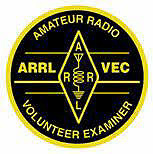As we’ve previously discussed, Amateur Radio Emergency Communications has changed from the days where a very informal response among a specialized group of technical individuals could provide support in an emergency in an improvised way.
The changes in how we are expected to respond are largely the result of the evolution of emergency response organizations within the government and without.As previously mentioned, many organizations like the Red Cross, Salvation Army, and even the government itself, have created their own communications teams comprised of Amateur Radio operators who meet their requirements.
Organizations like the Red Cross and Salvation Army are about providing direct aid during and following an emergency. Communications is one small component of that overall mission. So, within the Red Cross, for instance, the communications team members are Red Cross volunteers who happen to be Amateur Radio operators, not the other way around.
ARES (Amateur Radio Emergency Service), on the other hand, is an organization focused on communications first.That does not mean, however, that the organization isn’t focused on emergency response, merely that it’s focused on communications and its role in emergency response.
ARES has developed into a service provider organization, entering into agreements with various entities to provide emergency communications services for them.This is accomplished by entering into agreements with everyone from the National Weather Service to the Red Cross to state and local governments.




